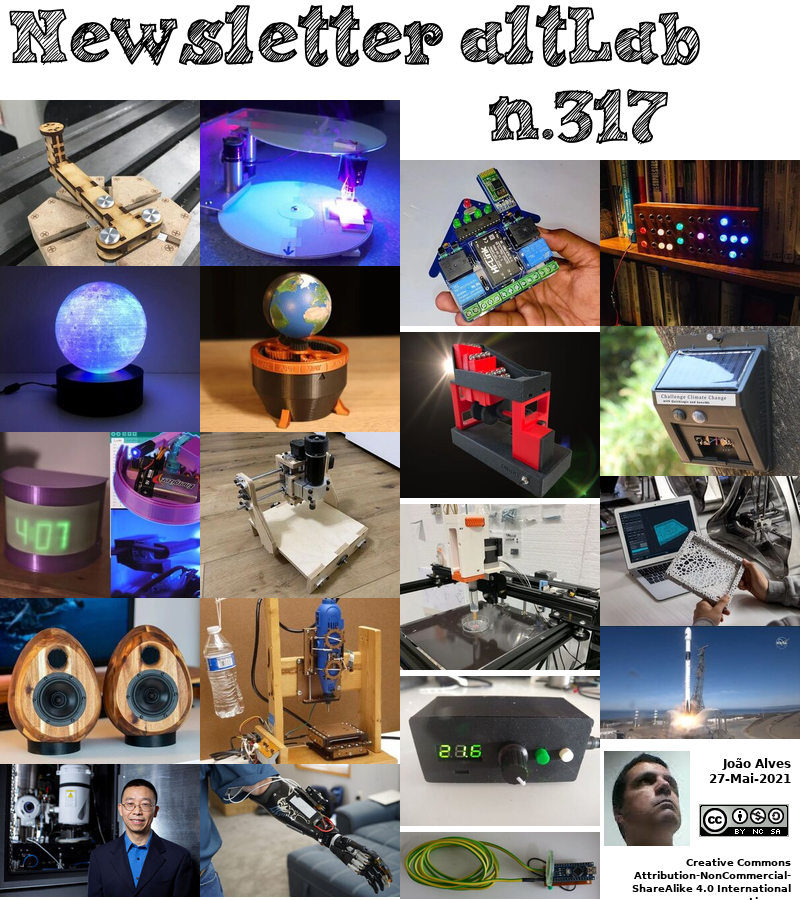2021-05-27 - Nº 317
Editorial
Esta é a Newsletter Nº 317 que se apresenta com o mesmo formato que as anteriores. Se gostar da Newsletter partilhe-a!
Todas as Newsletters encontram-se indexadas no link.
Esta Newsletter tem os seguintes tópicos:
Faz hoje anos que nascia, em 1774, o hidrógrafo irlandês Francis Beaufort. Ele criou a cifra Beaufort e a escala Beaufort. A cifra Beaufort, é uma cifra de substituição semelhante à cifra de Vigenère, com um mecanismo de codificação e quadro ligeiramente modificados. A sua aplicação mais famosa foi numa máquina de criptografia baseada em rotores, a Hagelin M-209.
Faz também hoje anos que nascia, em 1840, o químico sueco Lars Fredrik Nilson. Ele descobriu o óxido de escândio, escândia, nos minerais de terras raras gadolinita e euxenita. A existência do elemento foi prevista por Dmitry Ivanovich Mendeleyev (1871), que o chamou provisoriamente de ekaboron.
Faz igualmente hoje anos que nascia, em 1887, o químico físico polaco-americano Kazimierz Fajans. Ele descobriu a lei do deslocamento radioactivo simultaneamente com Frederick Soddy da Grã-Bretanha. De acordo com essa lei, quando um átomo radioactivo decai emitindo uma partícula alfa, o número atómico do átomo resultante é dois a menos que o do átomo original. Ele descobriu vários elementos que são criados por meio da desintegração nuclear. A primeira descoberta do protactínio foi em 1913 por Kasimir Fajans e O. Göhring, que encontraram o isótopo protactínio-234m (meia-vida de 1,2 min), um produto da decomposição do urânio-238; eles o chamaram de brevium por sua curta vida. (Protactinium-231 foi posteriormente identificado em 1918 por outros cientistas; o nome protoactinium foi adoptado nesta época.)
Faz também hoje anos que nascia, em 1897, o físico britânico John Cockcroft. Ele partilhou (com Ernest T.S. Walton da Irlanda) o Prémio Nobel de Física de 1951 por ser o pioneiro no uso de aceleradores de partículas para estudar o núcleo atómico. Juntos, em 1929, eles construíram um acelerador, o gerador Cockcroft-Walton, que gerou um grande número de partículas com energias mais baixas - o primeiro destruidor de átomos. Em 14 de Abril de 1932, eles usaram-o para desintegrar átomos de lítio, bombardeando-os com protões, a primeira reacção nuclear artificial que não utilizou substâncias radioactivas. Eles foram os primeiros a dividir o átomo. Eles conduziram pesquisas adicionais sobre a divisão de outros átomos e estabeleceram a importância dos aceleradores como uma ferramenta para a pesquisa nuclear. O seu desenho de acelerador tornou-se um dos mais úteis nos laboratórios do mundo.
Faz igualmente hoje anos que nascia, em 1909, o físico americano William Webster Hansen. Ele contribuiu para o desenvolvimento do radar e é considerado o fundador da tecnologia de micro-ondas. Ele desenvolveu o klystron, um tubo de vácuo essencial para a tecnologia de radar (1937). Baseado na modulação de amplitude de um feixe de electrões, ao invés de circuitos ressonantes de bobinas e condensadores, ele permite a geração de oscilações de alta frequência poderosas e estáveis. Ele revolucionou a física de alta energia e a pesquisa de micro-ondas e levou ao radar aerotransportado. O klystron também tem sido usado em comunicações por satélite, sistemas de orientação de aviões e mísseis e transmissão de telefone e televisão. Após a Segunda Guerra Mundial, trabalhando com três alunos de pós-graduação, Hansen demonstrou o primeiro acelerador linear de 4,5 MeV em 1947.
Por fim, faz hoje anos que nascia, em 1954, o físico teórico americano Lawrence Krauss. Ele foi um dos primeiros físicos a propor a enigmática energia escura que compõe a maior parte da massa e energia do universo. A sua área de estudo também inclui relacionar partículas elementares ao universo primitivo, relatividade geral e astrofísica de neutrinos.
E nesta semana que passou tivemos o primeiro eclipse lunar acompanhado de uma Super Lua. Uma Super Lua ocorre quando uma lua cheia ou nova coincide com a passagem mais próxima da Lua com a Terra. A órbita da Lua em torno da Terra não é perfeitamente circular. Isto significa que a distância da Lua com da Terra varia conforme ela gira ao redor do planeta. O ponto mais próximo na órbita, chamado perigeu, está aproximadamente 43.000 km mais perto da Terra do que o ponto mais distante da órbita. Uma lua cheia que acontece perto do perigeu é chamada de Super Lua. O Eclipse Lunar não foi possível observar a partir de Portugal.
Também nesta semana que passou a Ingenuity fez o seu sexto voo. Estava planeada a obtenção de imagens aéreas, estéreo de uma região de interesse a oeste. A telemetria do voo seis mostra que a primeira parte de 150 metros do voo correu sem problemas. Mas no final desta parte, algo aconteceu: a Ingenuity começou a ajustar a sua velocidade e a inclinar-se para frente e para trás num padrão oscilante. Este comportamento persistiu durante o resto do voo. Antes de pousar com segurança, os sensores a bordo indicaram que a aeronave de asas rotativas encontrou excursões de rotação e inclinação de mais de 20 graus, grandes entradas de controle e picos no consumo de energia. Olhando para o panorama geral, o voo terminou com a Ingenuity com segurança no solo porque vários subsistemas - o sistema de rotor, os actuadores e o sistema de energia - responderam às exigências crescentes para manter o helicóptero a voar.
Na Newsletter desta semana apresentamos diversas noticias, artigos científicos, projetos de maker assim como alguns videos interessantes. É apresentada a revista MagPI Nº106 de Junho.
 João Alves ([email protected])
João Alves ([email protected])
O conteúdo da Newsletter encontra-se sob a licença  Creative Commons Attribution-NonCommercial-ShareAlike 4.0 International License.
Creative Commons Attribution-NonCommercial-ShareAlike 4.0 International License.
Novidades da Semana

Supermoon! Red blood lunar eclipse! It’s all happening at once, but what does that mean?
"The first lunar eclipse of 2021 is going to happen during the early hours of May 26. But this is going to be an especially super lunar event, as it will be a supermoon, a lunar eclipse, and a red blood moon all at once. So what does this all mean? What’s a super moon? A supermoon occurs when a full or new moon coincides with the Moon’s closest approach to the Earth. The Moon’s orbit around Earth is not perfectly circular." [...]

Surviving an In-Flight Anomaly: What Happened on Ingenuity’s Sixth Flight
"On the 91st Martian day, or sol, of NASA’s Mars 2020 Perseverance rover mission, the Ingenuity Mars Helicopter performed its sixth flight. The flight was designed to expand the flight envelope and demonstrate aerial-imaging capabilities by taking stereo images of a region of interest to the west. Ingenuity was commanded to climb to an altitude of 33 feet (10 meters) before translating 492 feet (150 meters) to the southwest at a ground speed of 9 mph (4 meters per second). At that point, it was to translate 49 feet (15 meters) to the south while taking images toward the west, then fly another 164 feet (50 meters) northeast and land. Telemetry from Flight Six shows that the first 150-meter leg of the flight went off without a hitch. But toward the end of that leg, something happened: Ingenuity began adjusting its velocity and tilting back and forth in an oscillating pattern." [...]
Outras Notícias
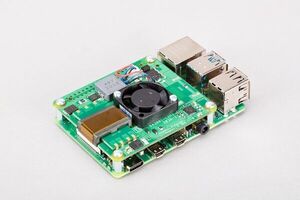
Announcing the Raspberry Pi PoE+ HAT
"Today we’re announcing the next generation of our Power over Ethernet (PoE) HAT. Compared to its predecessor, the Raspberry Pi PoE+ HAT delivers more power, implementing the 802.3at PoE+ standard; and it runs cooler, thanks to various design improvements. Best of all, we’ve been able to keep the original affordable price of $20. The current global semiconductor shortage — which you’ll almost certainly have read about by now — is constraining our supply of the original PoE HAT. In general, we’re weathering the shortage very well, and the supply of mainline Raspberry Pi computers, Zeros and our other products have not been affected (we’re very good at pipelining). Unfortunately, the first-gen PoE HAT uses silicon that’s in short supply." [...]

Toshiba Releases Photovoltaic-output Photocoupler for Isolated Solid State Relays
"Toshiba Electronic Devices & Storage Corporation ("Toshiba") has launched “TLP3910,” a photovoltaic-output photocoupler (“photovoltaic coupler”) housed in a thin SO6L package, suitable for driving the gates of high-voltage power MOSFETs used as isolated solid state relay (SSR) function. Volume production shipments start today. An SSR is a kind of semiconductor relays that has a photo triac, a photo transistor or photo thyristor as its output device. It is suitable for applications for performing ON/OFF control of large currents. A photovoltaic coupler is a photorelay with its optical devices but without the MOSFET used to perform switching functions. In configuring an isolated SSR, high-voltage, large-current switching, which photorelays handle with difficulty, can be implemented easily by combining a photovoltaic coupler and a MOSFET." [...]
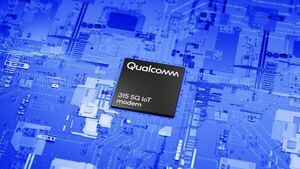
Qualcomm Advances and Scales 5G IoT Industry, Unveiling Purpose-Built 5G Modem Optimized for IIoT
"Qualcomm Technologies, Inc. helps lead the IoT ecosystem forward by introducing the company’s first, purpose-built Internet of Things (IoT) modem solution equipped with 5G connectivity and optimized for Industrial IoT (IIoT) applications. The Qualcomm® 315 5G IoT Modem-RF System is a comprehensive modem-to-antenna solution designed to support the IoT ecosystem in building upgradeable LTE and 5G devices for IoT verticals, accelerate the adoption of 5G connectivity for IoT, and expand the overall opportunity for 5G in the IoT industry. 5G was conceived as a broad connectivity fabric and today the momentum is beginning to exemplify the promised impact and growth of 5G for emerging applications including IoT. Acting as a catalyst for digital transformation, Qualcomm Technologies is at the forefront enabling the ecosystem with the solutions to update existing IoT systems and make 5G for IoT a reality. The needs of modern IoT include seamlessly transitioning wired factories to wireless with solutions capable of supporting both LTE and 5G connectivity. The Qualcomm 315 5G IoT modem was designed with industrial and enterprise applications in mind, built with premium gigabit class performance, low-power, and thermal-efficient capabilities to enable a new generation of fast, powerful and high-performing IoT solutions." [...]

Italy To Get Its First Stretch Of Inductive Highways For EV Charging On The Go
"The project will enable Wireless Power Transfer (WPT) technology to be demonstrated for a full range of EVs in multiple modes; including Static Power Transfer for stationary vehicles and Dynamic Power Transfer for vehicles in-motion. ElectReon, the leading provider of inductive in-road charging technology for commercial and passenger electric vehicles, announced that it will be joining the 'Arena of the Future'' project in Brescia, Italy where the company will integrate its wireless technology to charge two Stellantis vehicles, and an IVECO bus while driving. The project aims to demonstrate contactless charging for a range of EVs as they drive on highways and toll roads as a potential pathway to decarbonizing our transportation systems along motorway transport corridors. The project aims to demonstrate contactless charging for a range of EVs as they drive on highways During the project, ElectReon will provide the inductive wireless charging technology to be utilized by a consortium of local and international partners. These partners include IVECO, IVECO Bus and Stellantis-a recent merger between the Italian-American Fiat Chrysler Automobiles (FCA) and the French PSA Group-as well as toll road operator Brebemi for the A35 Brebemi-Aleatica Motorway, and additional partners: ABB, a leading global engineering and power electronics company; FIAMM Energy Technology, a multinational energy storage provider; Mapei S.p.A., an Italian chemical manufacturer; Pizzarotti, large-scale projects builders; Prysmian Group, a world leader in the energy and telecom cable systems industry; TIM Business, a 5G and connectivity provider; and leading Italian research institutions including Politecnico di Milano, Roma Tre University and Parma University. ElectReon's technology will entail the construction of a 1,050 meter asphalt ring road fed by 1MW of power." [...]
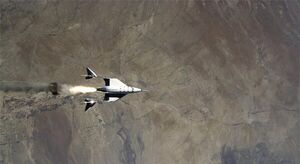
Virgin Galactic rocket ship ascends from New Mexico
"Virgin Galactic on Saturday made its first rocket-powered flight from New Mexico to the fringe of space in a manned shuttle, as the company forges toward offering tourist flights to the edge of the Earth’s atmosphere. High above the desert in a cloudless sky, the VSS Unity ignited its rocket to hurtle the ship and two pilots toward space. A live feed by NASASpaceFlight.com showed the ship accelerating upward and confirmed a landing later via radar. Virgin Galactic announced that its VSS Unity shuttle accelerated to three times the speed of sound and reached an altitude of just over 55 miles (89 kilometers) above sea level before making its gliding return through the atmosphere. British billionaire and Virgin Galactic founder Sir Richard Branson said the flight and landing bring the roughly 15-year-old venture tantalizingly close to commercial flights for tourists. Virgin Galactic says those flights could begin next year." [...]

USB Promoter Group Announces USB Power Delivery Specification Revision 3.1
"Specification defines delivering up to 240W of power over USB Type-C® The USB Promoter Group today announced the release of the USB Power Delivery (USB PD) Revision 3.1 specification, a major update to enable delivering up to 240W of power over the USB Type-C® cable and connector. Prior to this update, USB PD was limited to 100W via a solution based on 20V using USB Type-C cables rated at 5A. The USB Type-C specification has also been updated with Release 2.1 to define 240W cable requirements, and with the updated USB PD protocol and power supply definition, this extends the applicability of USB PD to a large number of applications where 100W wasn’t adequate. The new USB PD architecture defines a much more stringent power negotiation protocol that helps to ensure that access to and use of this higher power capability can be done safely. It should be noted that safety requirements for products that use power in the range of 100 – 240W are also more stringent than lower power products and are defined by the applicable safety specifications dictated by the regulations for each country where the products will be sold. “With the new capabilities of USB Power Delivery 3.1, we now enable higher power products such as larger notebook PCs to shift from traditional power connectors to USB Type-C,” said Brad Saunders, USB Promoter Group Chairman." [...]
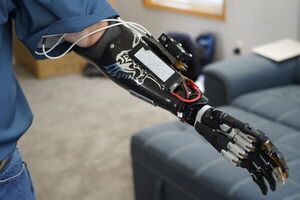
First-Hand Experience: Deep Learning Lets Amputee Control Prosthetic Hand, Video Games
"Path-breaking work that translates an amputee’s thoughts into finger motions, and even commands in video games, holds open the possibility of humans controlling just about anything digital with their minds. Using GPUs, a group of researchers trained an AI neural decoder able to run on a compact, power-efficient NVIDIA Jetson Nano system on module (SOM) to translate 46-year-old Shawn Findley’s thoughts into individual finger motions. And if that breakthrough weren’t enough, the team then plugged Findley into a PC running Far Cry 5 and Raiden IV, where he had his game avatar move, jump — even fly a virtual helicopter — using his mind. It’s a demonstration that not only promises to give amputees more natural and responsive control over their prosthetics. It could one day give users almost superhuman capabilities. The effort is detailed in a draft paper, or pre-print, titled “A Portable, Self-Contained Neuroprosthetic Hand with Deep Learning-Based Finger Control.” It details an extraordinary cross-disciplinary collaboration behind a system that, in effect, allows humans to control just about anything digital with thoughts." [...]
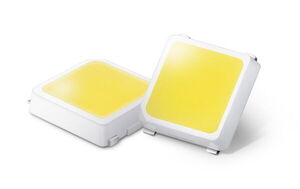
Samsung’s New Mid-power LED Integrates Unsurpassed Light Efficacy With Outstanding Color Quality
"The LM301B EVO enables luminaires to meet latest DLC V5.1 Premium and EU’s ErP Ecodesign requirements to accommodate evolving needs of the lighting industry Samsung Electronics, a world leader in advanced digital component solutions, today introduced the LM301B EVO, a new mid-power LED package that has been designed to set the pace in light efficacy and color quality for indoor and industrial applications. Global regulations and standards for lighting, once centered on light efficacy, are becoming more comprehensive to include strict criteria for energy efficiency and color quality. The European Union’s energy labels for light sources (Energy-related Products Directive; ErP) have been revised to become more stringent, and the Design Lights Consortium (DLC) — a non-profit organization for lighting standards in the U.S. and Canada — has added an index for color quality while requiring the same high efficacy level. The LM301B EVO helps to meet the rigorous lighting standards on both energy efficiency and color quality. Built upon Samsung’s proprietary flip-chip design, the LED package features the industry’s highest efficacy of 235 lumens per watt (lm/W), by applying a new reflective material inside the packaging mold and improving phosphor conversion efficiency. Samsung also fine-tuned the red spectrum in the LED’s phosphor mix to enable superior color quality, especially with the red hues which are usually more difficult to render accurately." [...]
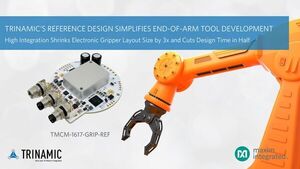
Trinamic's Open-Source Reference Design Shrinks and Speeds Development of End-of-Arm Tooling
"Integrated hardware-based field-oriented control and IO-Link communication reduce electronic robotic gripper design size by three times, while cutting development time in half TRINAMIC Motion Control GmbH & Co. KG, now part of Maxim Integrated Products, Inc. (NASDAQ: MXIM), introduces an open-source, fully integrated reference design that simplifies the development of industrial robotic end-of-arm tooling (EoAT). The TMCM-1617-GRIP-REF reference design integrates hardware-based field-oriented control (FOC) and three communication ports to shrink the design size of electronic robotic grippers by three times, while reducing development time by half. The reference design features Maxim Integrated's industrial-grade MAX22000 high-precision configurable analog input/output and MAX14906 quad-channel digital input/output to adjust the multiple modes of the Trinamic TMCM-1617 single axis servo driver. Designed to fit within the standard form-factor used for EoAT grippers, the TMCM-1617-GRIP-REF reference design supports industrial EtherCAT, IO-Link or RS-485 communication, provides software-programmable analog and digital input/outputs, and can be configured using the Trinamic Motion Control Language Integrated Development Environment (TMCL-IDE). This combination of reference design and software platform provides a simple way for design engineers to rapidly deliver a complete EoAT solution. Key Advantages - Speed Time to Market: The open-source EoAT gripper reference design is a fully integrated, intelligent hardware platform that provides motor control algorithms as well as protocol stacks to reduce end of arm tooling development time in half." [...]

Renesas Launches LTE CAT-M1 Module For Massive IoT Based On Carrier-Proven Monarch Technology From Sequans
"Pre-Tested and Certified Cat-M1 Cellular Modules Optimized and Ready to Deploy for Wireless IoT Networks Without the Need for Gateways; One-Stop Shop Portal Provides Device Management and Global Operation on a Single eSim Renesas Electronics Corporation (TSE:6723), a premier supplier of advanced semiconductor solutions, today introduced the RYZ014A, Renesas’ first cellular IoT module supporting the LTE Cat-M1 specification. This technology allows devices to directly connect to the internet without the need for a gateway by relying on the existing communication infrastructure owned by mobile network operators. This makes it economical to connect each device, which is especially beneficial when installing larger networks that require a low cost per unit. The pre-tested, pre-certified RYZ014A enables customers to quickly and cost-effectively implement wireless IoT applications across the globe. The RYZ014A module solves customers’ design and certification issues compared to building a wireless IoT solution from scratch. This includes RF regulatory certification, PTCRB/GCF certification and carrier certification for the customer’s network operator of choice." [...]
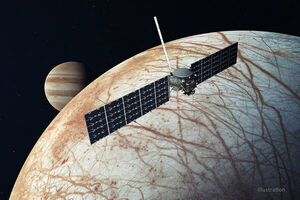
Europa’s Interior May Be Hot Enough to Fuel Seafloor Volcanoes
"Jupiter’s moon Europa has an icy crust covering a vast, global ocean. The rocky layer underneath may be hot enough to melt, leading to undersea volcanoes. New research and computer modeling show that volcanic activity may have occurred on the seafloor of Jupiter’s moon Europa in the recent past – and may still be happening. NASA’s upcoming Europa Clipper mission, targeting a 2024 launch, will swoop close to the icy moon and collect measurements that may shed light on the recent findings. Scientists have strong evidence that Europa harbors an enormous ocean between its icy crust and rocky interior. The new work shows how the moon may have enough internal heat to partially melt this rocky layer, a process that could feed volcanoes on the ocean floor." [...]

Renesas Expands Portfolio of World’s Smallest Photocouplers for Industrial Automation and Solar Inverter Applications
"New 8.2mm Creepage IGBT Drivers and IPM Driver Reduce PCB Mounting Area by 35 Percent to Maximize Board Space Renesas Electronics Corporation (TSE:6723), a premier supplier of advanced semiconductor solutions, today expanded its family of 8.2mm creepage photocouplers with three new devices designed for operation in harsh industrial automation equipment, solar inverter, and EV charger operating environments. Measuring a mere 2.5mm x 2.1mm in an LSSO5 package, the world’s smallest optical isolated IGBT drivers and intelligent power module (IPM) driver reduce PCB mounting areas by up to 35 percent compared with other devices on the market. “Industrial equipment and green energy system manufacturers are currently facing two core challenges: Equipment needs to get smaller, requiring downsizing for factory floor efficiency and higher functionality equipment within the same board size, while at the same time, safety standards are getting stricter,” said Philip Chesley, Vice President, Industrial and Communications Business Division at Renesas. “Our expanded portfolio of small isolation devices offers customers greater layout flexibility with more options to enable longer secured creepage distance for high-voltage inverter control applications.” The new RV1S9231A 2.5A output and RV1S9207A 0.6A output IGBT drivers and RV1S9209A active high output IPM driver come in low-profile LSSO5 packages with a 0.65mm pin pitch, deliver 5,000 Vrms isolation voltage, and support high temperature operation up to 125°C to withstand the harsh operating environments. The photocoupler trio also supports 200V and 400V systems with reinforced insulation to meet stringent industrial safety standards, adhering to the strict UL61800-5-1 standards for motor drive equipment. Renesas has identified and created a system architecture for various applications where the RV1S92xxA family of products adds tangible value in the system." [...]

Watch SpaceX launch a new Starlink satellite fleet on a used rocket today
" SpaceX will launch its fourth Falcon 9 rocket of the month today (May 26) to carry a new fleet of Starlink broadband satellites into space and you can watch the action live online. The private spaceflight company will launch a full stack of 60 Starlink satellites on one of its newest rockets, a Falcon 9 dubbed B1063. The frequent flier is scheduled to blast off from Space Launch Complex 40 here at Cape Canaveral Space Force Station here in Florida at 2:59 p.m. EDT (1859 GMT). Wednesday's flight is the 16th Falcon 9 mission for SpaceX so far in 2021 — none of which have flown on a shiny, new rocket. The mission, called Starlink 28, is the company's fourth such flight this month and will bring the total number of SpaceX broadband satellites launched into orbit up to 1,737. SpaceX created its Starlink program in hopes of providing high-speed internet access to users around the world, and as a means to help fund its deep space ambitions." [...]
Ciência e Tecnologia

Slender robotic finger senses buried items
"The technology uses tactile sensing to identify objects underground, and might one day help disarm land mines or inspect cables. Over the years, robots have gotten quite good at identifying objects — as long as they’re out in the open. Discerning buried items in granular material like sand is a taller order. To do that, a robot would need fingers that were slender enough to penetrate the sand, mobile enough to wriggle free when sand grains jam, and sensitive enough to feel the detailed shape of the buried object. MIT researchers have now designed a sharp-tipped robot finger equipped with tactile sensing to meet the challenge of identifying buried objects. In experiments, the aptly named Digger Finger was able to dig through granular media such as sand and rice, and it correctly sensed the shapes of submerged items it encountered." [...]

The future of the IoT (batteries not required)
"Benton Calhoun SM '02 PhD '06 and David Wentzloff SM '02 PhD '07 are co-founders of Everactive, which uses wireless sensing to provide continuous remote monitoring for the industrial internet of things. When Ben Calhoun and Dave Wentzloff co-founded Everactive in 2012, analysts and tech companies were forecasting a massive increase in the number of internet-connected devices, collectively referred to as the internet of things (IoT). IBM, for example, predicted a staggering 1 trillion IoT-connected devices by 2015. But Calhoun and Wentzloff knew better. The pair, who’d met as graduate students researching ultra-low-power circuits in Anantha Chandrakasan’s research group at MIT, recognized that 1 trillion devices meant the near-impossible task of managing 1 trillion batteries to sustain all of the sensors needed to continuously collect, analyze, and send data. “Ben and I recognized that there was no way those IoT projections could happen if all of the devices had to run on batteries,” says Wentzloff." [...]
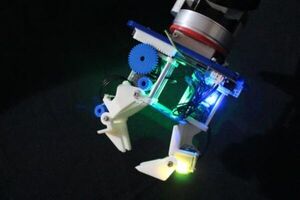
A Simpler, but Dexterous Robot Hand
"Humans use all surfaces of the hand for contact-rich manipulation. Robot hands, in contrast, typically use only the fingertips, which can limit dexterity. In a new study from the lab of Aaron Dollar, professor of mechanical engineering & materials science & computer science, researchers took a non-traditional approach to creating a new design for robotic hands. The research team - graduate students Walter Bircher and Andrew Morgan, and Dollar - designed a two-fingered dexterous hand. Known as “Model W,” it was inspired by the high levels of dexterity seen in humans’ hand movements and robotic caging grasps - a strategy used to loosely trap objects between the fingers of a hand, preventing object ejection while allowing some free motion to occur. With the goal of making the design a useful tool for others in the robotic manipulation community, the researchers made the design a relatively simple one, with inexpensive components." [...]

New technique breaks the mould for 3D printing medical implants
"Researchers have flipped traditional 3D printing to create some of the most intricate biomedical structures yet, advancing the development of new technologies for regrowing bones and tissue. The emerging field of tissue engineering aims to harness the human body’s natural ability to heal itself, to rebuild bone and muscle lost to tumours or injuries. A key focus for biomedical engineers has been the design and development of 3D printed scaffolds that can be implanted in the body to support cell regrowth. But making these structures small and complex enough for cells to thrive remains a significant challenge. Enter a RMIT University-led research team, collaborating with clinicians at St Vincent’s Hospital Melbourne, who have overturned the conventional 3D printing approach. Instead of making the bioscaffolds directly, the team 3D printed moulds with intricately-patterned cavities then filled them with biocompatible materials, before dissolving the moulds away." [...]

Novel Tandon-designed microchip will allow data to be processed without being decrypted
"A research team at the NYU Center for Cyber Security (CCS) at NYU Tandon are participating in a major initiative in collaboration with data security company Duality — supported by a $14 million grant from the Defense Advanced Research Projects Agency (DARPA) — to design a revolutionary new microchip (codenamed “Trebuchet”). The microprocessor, to be designed by CCS researchers Mihalis Maniatakos, research assistant professor of electrical and computer engineering; and Brandon Reagen, assistant professor of electrical and computer engineering and computer science and engineering, will accelerate and enable practical applications of an emerging type of encryption, called fully homomorphic encryption (FHE). Typically, data encryption protects data in transit: it’s locked in an encrypted “container” for transit over potentially unsecured networks, then unlocked at the other end, by the other party for analysis. But outsourcing to a third-party is inherently insecure. FHE is an advanced cryptographic technique, widely considered the “holy grail of encryption,” that enables multiple users to process encrypted data while the data or models remain encrypted, preserving data privacy throughout the analytics process, not just during transit. The hardware Maniatakos and Reagen are developing as part of the three-and-a-half year project is of particular value to AI systems because it allows data scientists to train some of the most advanced machine learning (ML) models on encrypted data, enabling organizations to leverage greater amounts of diverse sensitive data for training." [...]

Cornell researchers see atoms at record resolution
"In 2018, Cornell researchers built a high-powered detector that, in combination with an algorithm-driven process called ptychography, set a world record by tripling the resolution of a state-of-the-art electron microscope. As successful as it was, that approach had a weakness. It only worked with ultrathin samples that were a few atoms thick. Anything thicker would cause the electrons to scatter in ways that could not be disentangled. Now a team, again led by David Muller, the Samuel B. Eckert Professor of Engineering, has bested its own record by a factor of two with an electron microscope pixel array detector (EMPAD) that incorporates even more sophisticated 3D reconstruction algorithms. The resolution is so fine-tuned, the only blurring that remains is the thermal jiggling of the atoms themselves." [...]
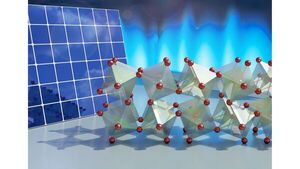
Liquid-like motion in crystals could explain their promising behavior in solar cells
"Spontaneous, liquid-like vibrations in crystalline materials may explain their efficiency in harvesting solar energy. The sun delivers more energy to Earth in one hour than humanity consumes over an entire year. Scientists worldwide are searching for materials that can cost-effectively and efficiently capture this carbon-free energy and convert it into electricity. Perovskites, a class of materials with a unique crystal structure, could overtake current technology for solar energy harvesting. They are cheaper than materials used in current solar cells, and they have demonstrated remarkable photovoltaic properties — behavior that allows them to very efficiently convert sunlight into electricity. Revealing the nature of perovskites at the atomic scale is critical to understanding their promising capabilities." [...]
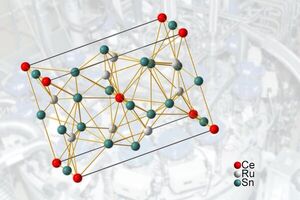
New quantum material discovered
"A research team from TU Wien together with US research institutes came across a surprising form of "quantum criticality". This could lead to a design concept for new materials. In everyday life, phase transitions usually have to do with temperature changes – for example, when an ice cube gets warmer and melts. But there are also different kinds of phase transitions, depending on other parameters such as magnetic field. In order to understand the quantum properties of materials, phase transitions are particularly interesting when they occur directly at the absolute zero point of temperature. These transitions are called "quantum phase transitions" or a "quantum critical points"." [...]

Researchers Develop Novel Raman Method to Capture Target Molecules in Small Gaps Actively
"Recently, Professor YANG Liangbao, from the Institute of Health and Medical Technology, Hefei Institutes of Physical Science (HFIPS), developed a general surface-enhanced Raman spectroscopy (SERS) method for actively capturing target molecules in small gaps based on nano-capillary pumping model. Relevant results were detailed in the Journal of the American Chemical Society. SERS is a spectroscopic technique typically used to determine vibrational modes of molecules. It’s commonly used in chemistry to provide a structural fingerprint by which molecules can be identified. In this research, using the principle of capillary suction, they constructed a nanocapillary pumping model, for the first time, with ubiquitous hot spots, leading to the first systematic study of small gaps to actively capture molecules. "What makes this method stand out is the highly universal characteristic of it," said YANG, a scientist of medicine." [...]

Magnetically propelled cilia power climbing soft robots and microfluidic pumps
"The rhythmic motions of hair-like cilia move liquids around cells or propel the cells themselves. In nature, cilia flap independently, and mimicking these movements with artificial materials requires complex mechanisms. Now, researchers reporting in ACS Applied Materials & Interfaces have made artificial cilia that move in a wave-like fashion when a rotating magnetic field is applied, making them suitable for versatile, climbing soft robots and microfluidic devices. Replicating movements found in nature –– for example, the small, whip-like movements of cilia –– could help researchers create better robots or microscopic devices. As cilia vibrate sequentially, they produce a traveling wave that moves water more efficiently and with a better pumping speed than when the cilia move at the same time. Previous researchers have recreated these wave-like movements, but the artificial cilia were expensive, needed sophisticated moving parts and were too large to be used for micro-scale devices." [...]
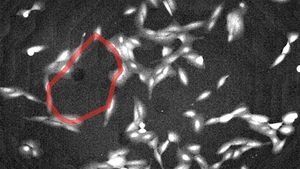
Researchers use ‘hole-y’ math and machine learning to study cellular self-assembly
"A new study shows that mathematical topology can reveal how human cells organize into complex spatial patterns, helping to categorize them by the formation of branched and clustered structures. The field of mathematical topology is often described in terms of donuts and pretzels. To most of us, the two differ in the way they taste or in their compatibility with morning coffee. But to a topologist, the only difference between the two is that one has a single hole and the other has three. There’s no way to stretch or contort a donut to make it look like a pretzel — at least not without ripping it or pasting different parts together, both of which are verboten in topology. The different number of holes make two shapes that are fundamentally, inexorably different." [...]
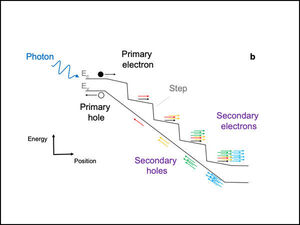
Ultra-sensitive Light Detector Gives Self-Driving Tech a Jolt
"Realizing the potential of self-driving cars hinges on technology that can quickly sense and react to obstacles and other vehicles in real time. Engineers from The University of Texas at Austin and the University of Virginia created a new first-of-its-kind light detecting device that can more accurately amplify weak signals bouncing off of faraway objects than current technology allows, giving autonomous vehicles a fuller picture of what’s happening on the road. The new device is more sensitive than other light detectors in that it also eliminates inconsistency, or noise, associated with the detection process. Such noise can cause systems to miss signals and put autonomous vehicle passengers at risk. "Autonomous vehicles send out laser signals that bounce off objects to tell you how far away you are. Not much light comes back, so if your detector is putting out more noise than the signal coming in you get nothing," said Joe Campbell, professor of electrical and computer engineering at the University of Virginia School of Engineering." [...]

3D printing stem cells to transform neuroscience
"The MESO-BRAIN project used human-induced pluripotent stem cells placed on nanoscale 3D-laser-printed structures to replicate the brain’s neural networks 3D printing, also called additive manufacturing, has become widespread in recent years. By building successive layers of raw material such as metals, plastics, and ceramics, it has the key advantage of being able to produce very complex shapes or geometries that would be nearly impossible to construct through more traditional methods such as carving, grinding, or moulding. The technology offers huge potential in the health care sector. For example, doctors can use it to make products to match a patient’s anatomy: a radiologist could create an exact replica of a patient’s spine to help plan surgery; a dentist could scan a patient’s broken tooth to make a perfectly fitting crown reproduction. But what if we took a step further and apply 3D printing techniques to neuroscience? Stems cells are essentially the body’s raw materials; they are pluripotent elements from which all other cells with specialised functions are generated." [...]

To make particles flow more efficiently, put an obstacle in their way
"Microfluidic chips speed up biological and chemical experiments. Researchers made them more efficient by using cleverly designed ‘traffic circles’ to direct the flow of fluids. Scientists used to perform experiments by stirring biological and chemical agents into test tubes. Nowadays, they automate research by using microfluidic chips the size of postage stamps. In these tiny devices, millions of microscopic particles are captured in droplets of water, each droplet serving as the “test tube” for a single experiment. The chip funnels these many droplets, one at a time, through a tiny channel where a laser probes each passing droplet to record thousands of experimental results each second." [...]

New Optimization Approach Helps Design Lighter Carbon Fiber Composite Materials
"New design approach for manufacturing carbon fibers with optimized orientation and thickness achieves weight reduction in fiber reinforced plastics Carbon fibers, due to their superior strength and lightness, are popular in aerospace engineering applications. While much effort goes into improving the strength of carbon fiber composites, such as fiber-reinforced plastic, only fiber orientation optimization is considered. Now, researchers from Tokyo University of Science have adopted a new design method that optimizes both fiber thickness and orientation, achieving weight reduction in reinforced plastic and opening doors to lighter aircrafts and automobiles. Carbon is vital to the existence of all living organisms, since it forms the basis of all organic molecules that, in turn, form the basis of all living beings. While that alone is pretty impressive, it has recently found surprisingly novel applications in disciplines such as aerospace and civil engineering with the development of carbon fibers that are stronger, stiffer, and lighter than steel. Consequently, carbon fibers have taken over steel in high-performance products like aircrafts, racecars, and sports equipment." [...]

Engineering matter at the atomic level
"As devices continue to be built on an increasingly small scale, scientists are looking toward developing ways to engineer materials at the atomic level. In a breakthrough that will contribute to this, published in Nature Communications, researchers from the RIKEN Cluster for Pioneering Research and RIKEN Center for Advanced Photonics, along with collaborators, have developed a way to use a “dry transfer technique”—a technique that uses no solvent—to position optical quality carbon nanotubes in a precise way. Carbon nanotubes are a promising type of materials with potential uses in applications such as light-emitting diodes, single-electron transistors, or as single photon sources. They are essentially tubes made up of graphene twisted in specific ways, and the way they are twisted is critical for allowing the desired properties to emerge. Creating devices with desired properties requires precise manipulation of the position and orientation of the nanotubes, along with a property known as “chirality,” which essentially describes how much it is twisted. It is difficult to manipulate the molecules precisely, however, as using solvents or high-temperature treatment inevitably leaves the nanotubes dirty, hampering their optical characteristics." [...]

Study of promising photovoltaic material leads to discovery of a new state of matter
"Researchers at McGill University have gained new insight into the workings of perovskites, a semiconductor material that shows great promise for making high-efficiency, low-cost solar cells and a range of other optical and electronic devices. Perovskites have drawn attention over the past decade because of their ability to act as semiconductors even when there are defects in the material’s crystal structure. This makes perovskites special because getting most other semiconductors to work well requires stringent and costly manufacturing techniques to produce crystals that are as defect-free as possible. In what amounts to the discovery of a new state of matter, the McGill team has made a step forward in unlocking the mystery of how perovskites pull off this trick. “Historically, people have been using bulk semiconductors that are perfect crystals. And now, all of a sudden, this imperfect, soft crystal starts to work for semiconductor applications, from photovoltaics to LEDs,” explains senior author Patanjali Kambhampati, an associate professor in the Department of Chemistry at McGill." [...]

Physicists uncover secrets of world’s thinnest superconductor
"Work helps answer 30-year-old questions, could lead to better medical diagnostics, more Physicists from across three continents report the first experimental evidence to explain the unusual electronic behavior behind the world’s thinnest superconductor, a material with myriad applications because it conducts electricity extremely efficiently. In this case the superconductor is only an atomic layer thick. The work, led by an MIT professor and a physicist at Brookhaven National Laboratory, was possible thanks to new instrumentation available at only a few facilities in the world. The resulting data could help guide the development of better superconductors. These in turn could transform the fields of medical diagnostics, quantum computing, and energy transport, which all use superconductors. The subject of the work belongs to an exciting class of superconductors that become superconducting at temperatures an order of magnitude higher than their conventional counterparts, making them easier to use in applications." [...]

Scientists Reveal Novel Double-roaming Mechanism in Chemical Reaction
"Roaming, a novel mechanism in reaction dynamics, describes an unusual pathway that is quite different from the conventional minimum-energy path. It is facilitated by the initial frustrated dissociation to form radical products, and then the meandering of the incipient radicals, ultimately leading to intramolecular abstraction and to the products. Recently, a group led by Prof. FU Bina and Prof. ZHANG Donghui from the Dalian Institute of Chemical Physics (DICP) of the Chinese Academy of Sciences, in collaboration with Prof. HAN Yongchang from Dalian University of Technology, discovered a novel double-roaming mechanism in a combustion reaction. This work was published in The Journal of Physical Chemistry Letters on Apr. 26. The researchers developed a new, global, full-dimensional potential energy surface (PES) to study the full-dimensional dynamics of the H+HCCH reaction." [...]
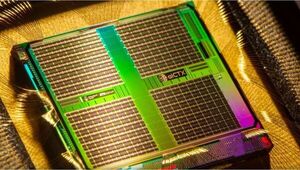
Artificial Neurons Recognize Biosignals in Real Time
"Researchers from Zurich have developed a compact, energy-efficient device made from artificial neurons that is capable of decoding brainwaves. The chip uses data recorded from the brainwaves of epilepsy patients to identify which regions of the brain cause epileptic seizures. This opens up new perspectives for treatment. Current neural network algorithms produce impressive results that help solve an incredible number of problems. However, the electronic devices used to run these algorithms still require too much processing power. These artificial intelligence (AI) systems simply cannot compete with an actual brain when it comes to processing sensory information or interactions with the environment in real time." [...]

How metals work together to weaken hardy nitrogen-nitrogen bonds
"Study yields clues into how nitrogenase, an enzyme critical for life, converts nitrogen into ammonia. Nitrogen, an element that is essential for all living cells, makes up about 78 percent of Earth’s atmosphere. However, most organisms cannot make use of this nitrogen until it is converted into ammonia. Until humans invented industrial processes for ammonia synthesis, almost all ammonia on the planet was generated by microbes using nitrogenases, the only enzymes that can break the nitrogen-nitrogen bond found in gaseous dinitrogen, or N2. These enzymes contain clusters of metal and sulfur atoms that help perform this critical reaction, but the mechanism of how they do so is not well-understood. For the first time, MIT chemists have now determined the structure of a complex that forms when N2 binds to these clusters, and they discovered that the clusters are able to weaken the nitrogen-nitrogen bond to a surprising extent." [...]
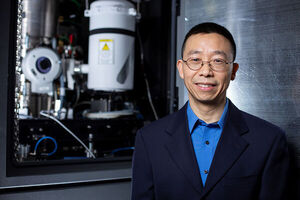
Engineered defects in crystalline material boosts electrical performance
"Materials engineers don’t like to see line defects in functional materials. The structural flaws along a one-dimensional line of atoms generally degrades performance of electrical materials. So, as a research paper published today by the journal Science reports, these linear defects, or dislocations, “are usually avoided at all costs.” But sometimes, a team of researchers from Europe, Iowa State University and the U.S. Department of Energy’s Ames Laboratory report in that paper, engineering those defects in some oxide crystals can actually increase electrical performance. The research team – led by Jürgen Rödel and Jurij Koruza of the Technical University of Darmstadt in Germany – found certain defects produce significant improvements in two key measurements of electrical performance in barium titanate, a crystalline ceramic material. “By introducing these defects into the material, we can change, modify or improve the material’s functional properties,” said Xiaoli Tan, an Iowa State professor of materials science and engineering and a longtime research collaborator with Rödel. In this case, the engineered defects led to a five-fold increase in dielectric properties (that restrict the flow of current) and a 19-fold increase in piezoelectric properties (that internally generates an electric field when subject to mechanical stress), Tan said." [...]
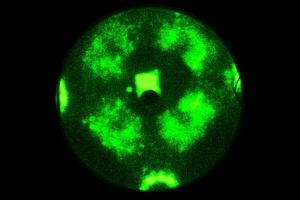
Nanoparticles: The Complex Rhythm of Chemistry
"Nanoparticles are often used as catalysts. The chemical reactions on their surface are more complex than previously thought, experiments at TU Wien (Vienna) show. Most of commercial chemicals are produced using catalysts. Usually, these catalysts consist of tiny metal nanoparticles that are placed on an oxidic support. Similar to a cut diamond, whose surface consists of different facets oriented in different directions, a catalytic nanoparticle also possesses crystallographically different facets - and these facets can have different chemical properties. Until now, these differences have often remained unconsidered in catalysis research because it is very difficult to simultaneously obtain information about the chemical reaction itself and about the surface structure of the catalyst." [...]

More efficient lidar sensing for self-driving cars
"If you see a self-driving car out in the wild, you might notice a giant spinning cylinder on top of its roof. That’s a lidar sensor, and it works by sending out pulses of infrared light and measuring the time it takes for them to bounce off objects. This creates a map of 3D points that serve as a snapshot of the car’s surroundings. One downside of lidar is that its 3D data is immense and computationally intensive. A typical 64-channel sensor, for example, produces more than 2 million points per second. Due to the additional spatial dimension, the state-of-the-art 3D models require 14x more computation at inference time compared to its 2D image counterpart." [...]
Documentação
A documentação é parte essencial do processo de aprendizagem e a Internet além de artigos interessantes de explorar também tem alguma documentação em formato PDF interessante de ler. Todos os links aqui apresentados são para conteúdo disponibilizado livremente pelo editor do livro.
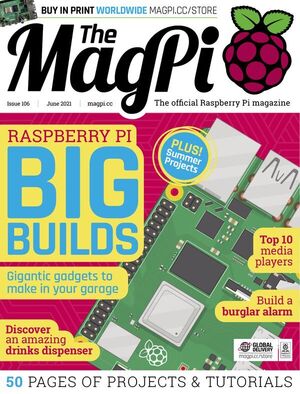
The MagPi 106
"Inside The MagPi magazine #106 Big Builds. Sometimes you feel the need to make something a little bigger. Whether it’s an arcade or pinball machine, photo booth, guitar or magic mirror. These are the builds that make a big impression. Summer Projects. Something for the summer months?" [...]
Projetos Maker
Diversos Projetos interessantes.
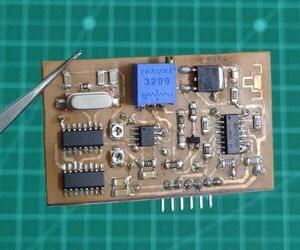
TL494 Working With a Crystal || Generate Perfect 50Hz Modified Square Waves
"Hello everyone! Thank you for stopping by this instructable. This is a very exciting project where I have made this TL494 based modified square wave module that is controlled by a crystal oscillator for having super accurate output frequency of 50Hz and it also comes in with an adjustable deadtime control so that you can manually select the wave form that you want and all this without using any microcontroller! I found this concept quite fascinating and thought of making a module which can generate the control signals for using it in a modified square wave inverter. This project used some very commonly used ICs which are easily available over your local hardware store as well as online. So without any furthur delay lets get started!" [...]

DIY Laser People Counter
"Let's start of with a question: What is a people counter? .... Well, it is a device, that counts the amount of people passing by. They are usually placed in doorways and can be used to see how many people are in a room or a restaurant or a store at any given time. The people counter that I am going to show you today uses a laser to count the people and can be connected to any device that has a webbrowser using WiFi. This allows a simple web UI to be displayed on all kinds of devices as seen in the fifth image. I also attached a little video so you can see it in action." [...]

Low(est?) Cost Reproducible 3-axis CNC Mill
"As far as I know as of writing: this is the lowest cost 3-axis CNC mill you can build from available parts and repeatable instructions. It's small and I hadn't even thought of trying to cut steel before starting this sentence, but it's small and that reduces the "more stuff" cost too. I've been milling acrylic and hardboard/HDF with encouraging results. A few trials with aluminum [*] were limited by pilot error rather than the machine and that was all I wanted to know at the time. This little mill uses three similar but different versions of "a cheap compact linear motion slide". That's a huge Instructable that does the heavy lifting for this project." [...]

Arduino WiFi Tetris Clock
"Its iconic falling blocks are instantly recognizable to almost anyone, regardless of their interest in video games. But instead of using the blocks to clear lines, we are going to use them to tell time! This project draws out the digits of a clock using the classic Tetris shapes on a LED Matrix display. Measuring in at roughly 19cm x 9.5cm, this is physically quite a large display which is very bright, so the result is incredibly eye catching. Another twist with this project is, unlike traditional Arduino clock projects, it does not use a RTC module for keeping time, instead the time for the clock is set from the internet. One big advantage of this is that you only need to set your timezone and the clock will automatically display the correct time, it will even adjust for daylight savings." [...]

Low-tech and High-tech POV (Persistence of Vision)
"Persistence of vision is an optical illusion. When we look at an object, our eyes keep seeing an image of it for a fraction of a second after the object is removed. If several images appear quickly after each other, they seem to merge. My low-tech example is a piece of cardboard with vertical lines on one side and horizontal lines on the other. When it spins, a word becomes visible. The high-tech example has a small computer and a single row of LEDs that flicker in a specific order." [...]
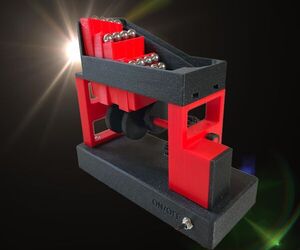
Marble Climber - Motorized - 3D Printed
"This project is about the revision and motorization of a great crank operated marble machine, to find on https://www.thingiverse.com/thing:3160563. Thanks to 3DprintedMarble for this little machine. I like it very much! In addition to the "motorization" this is a completely reworked project! I use the base as a container for battery, switch, AC/DC socket and wiring at the same time and therefore I had to redesign it, also the pillars. Assembly preparations: There are several parts in this project which are connected with screws." [...]
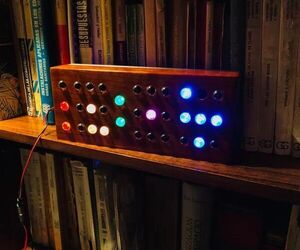
ESP 8266 - Laboratory Test Tubes Tix Clock
"It´s been a long time since the hype for the tix clocks has faded. I started building it at the beginning of 2014! but, 2 kids and moving abroad made this project to fall in the list of priorities. The idea of a tix clock is to count the dots that are illuminated. Each group illuminates the amount of LEDs corresponding to its digit of the time read in the HH:MM format. I know, life is hard enough to complicate reading the time, but it has color lights!" [...]
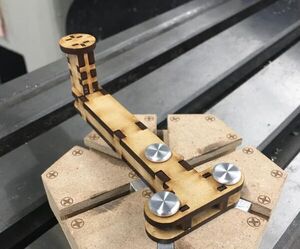
Trammel of Archimedes Via 4 Machines
"If you have never heard of a trammel of Archimedes they were originally used for drawing ellipses. The original models had only two slides and could be adjusted to change the shape of the drawn ellipse. I find them to be neat trinkets and I have always been somewhat fascinated in their mechanics! For more in-depth info: Trammel of Archimedes I work in the engineering department at a local University where I am responsible for the engineering lab. The lab houses many different machines where I assist students in creating class and personal projects. Some of the components of this project could be made on one CNC machine, however, I have been specifically developing this project for the sake of educating students on various machines while also giving them a final assembly to showcase their work." [...]

Simple LED Bar Graph CO2 Sensor
"There is a special interest in CO2 sensors lately because they are also useful to help prevent the spreading of the Coronavirus. Since the virus is mainly transmitted via aerosols it is important to assure good ventilation indoors. Since CO2 is exhaled together with aerosols (VOC = volatile organic compounds) the concentration of both are correlated and a CO2 sensor can be used to indicate when you should open a window to let fresh air into the room. Apart from that of course also a too high CO2 concentration is in itself harmful and can cause fatigue or headaches. There have been a number of DIY CO2 projects perhaps the most notable one is that of Stephan Schulz who together with his daughter made a CO2 sensor pendant for her to wear at school. Building a CO2 sensor is a great project for students as they can learn about gas sensing, electronics, programming while making a device that is really useful for their everyday life in school." [...]

How to Build a Bluetooth Controlled Home Automation
"Do you want to automate your home? Ever wished to control your appliances with a swipe on your phone? Or do you want to learn how to build automation device for yourself? In this project, lets see how to build a Bluetooth based home automation project. Supplies: - PCB - HC-05 Blutooth Module - Hi-Link (5V) - 5V Relay - 4 Nos - ATMEGA328P IC - 28 Pin IC Base - 16 Mhz Crystal Oscillator - BC547 Transistor - 4 Nos - 22pF Capacitor - 2 Nos - LED 5mm - 5 Nos - IN4007 Diode - 5 Nos - 1K Resistor - 9 Nos - 2 Pin Screw Connector - 3 Pin Screw Connector - 4 Nos" [...]

A Simple Clock
"In this coronavirus lockdown, I came back to my hometown. Everything is perfectly fine here but there was one small problem. There is no clock on my table. I know a table clock sounds a little redundant especially in this era of smartphones and laptops, but it's always good to have one. Also, it is irritating when you are doing some work or watching any series on full screen and have to scroll up or fetch for the phone just to check the time. My old table clock is kept in my dormitory." [...]

Portable Power Supply (18650 Battery)
"Every time, when you get a new idea and need to design a new electrical circuit, you want to test your idea as quickly as possible. The breadboard very helpful to us in such cases. There comes a moment when you need to power up your circuit and you start thinking... "Where to get power for the breadboard prototype? ", "Maybe get the lab power supply from the garage? Too far..." "Maybe this battery is suitable? Nope, too high/low voltage."" [...]

Glow in the Dark Robotic Clock
"Thank you for checking out my tutorial! You are awesome. I put a lot of time into the YouTube video so watch it too, it explains it all. Note: Read and follow all safety instructions and wear proper PPE. 1 7805 5V regulator 1 ATtiny85 microcontroller 2 LS-0006 servo (or similar type and dimensions) 1 Mini 3 pin switch 1 Blue LED 1 9V battery and connector 1 3 Pin jumper wire 1 Glow in The Dark Sticker A5 Paper 5pcs 1 Overhead Projector Sheets 3D Printed file attached. (0.2mm layer height." [...]

Rotary CNC Laser Engraver
"I created an inovative laser engraver mashine with equipment available on my faculty. Because I was really pleased with the result I wanted to share the process and the final creation. Fundamental principal of the device is quite inovative. Instead of a standard X-Y CNC machine programing and design, it uses two rotational movementf of two gears. For this to work, proper kinematic transformations have to be applied so that the inner coordinates of a device move the motors accordingly to the "world" coordinates. Only then can standard programing in XY coordinates be used for preparing vector images for engraving in software such as CadToMotion and others." [...]
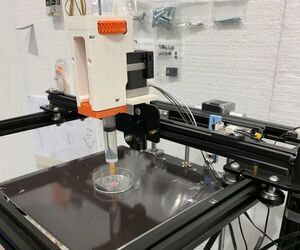
Open Source Bioprinter
"Hello everyone! This project has been developed for my final Engineering degree project. The aim was to convert a commercial FDM 3D printer into a bioprinter with the minimum budget possible. This proposal comes from the challenge that bioprinters are usually very expensive, ranging from 20.000€ to even 500,000€. Therefore, we wanted to make this technology available to every maker, and the best tool that a DIYer has is its own 3d printer. With very few and simple tools, filament, and the knowledge anyone who wants to experiment with bioprinter will be able to do so." [...]
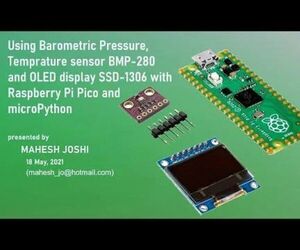
Weather Data on OLED Using Pi Pico and MicroPython
"In this project we are connecting BMP-280 barometric pressure and temperature sensor and SSD-1306 OLED display using Raspberry Pi Pico and showing barometric pressure and temperature using microPython coding. Supplies - Raspberry Pi Pico board - BMP-280 Barometric Pressure and Temperature sensor wit I2C support - SSD-1306 OLED 0.96" display with SPI support - Breadboard and few jumper wires and a Windows/Linux Computer having Thonny installed on it" [...]

CNC-machined Wooden Egg Speakers
"To many people, a speaker is nothing more than a cheap piece of equipment they place somewhere on their desks so they can listen to some music or videos - not caring about looks or sound quality of the speaker whatsoever. For other people, however - me included - a speaker is something that needs to be a great-looking design piece catching attention on the desk and the components for it are carefully selected and its dimensions precisely calculated for an optimal listening experience. Quite a while ago, I saw a video about the Munro Sonic Egg 100 egg-shaped speakers on YouTube and ever since I had this crazy idea in my head, but was lacking the capabilities to make something similar. A few weeks ago, however, I finished building my new CNC router and thought that the egg-shaped speaker would be an absolutely great way to explore the capabilities of my machine and learn many new techniques in CAD and CAM. Follow along to see how I designed and manufactured this unique set of speakers...! Supplies - CAD and CAM software (I used Autodesk Fusion 360 as an all-in-one solution) - CNC router - 3D printer - approx." [...]
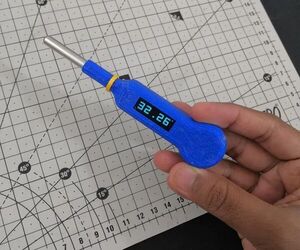
Contact Digital Thermometer With Deep Sleep
"This might seem totally useless, considering how advance current technology can be and you might even be like "Tsk! a Thermometer?" But there is a lot of experiment based on temperature (water temperature, room temperature, etc) so digital thermometer becomes a key instrument for temperature measurement considering the other alternatives and cost/performance ratio. It is used from measuring temperature of human body to measuring temperature of chemical substances. So, In this Instructable we'll build a digital thermometer which runs on a single CR2032 cell for almost 140days! (In makers term that is amazing!)" [...]
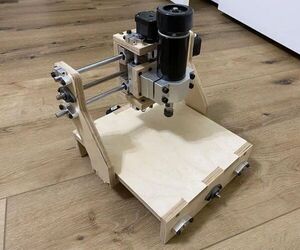
Mini CNC Milling Machine
"Hi friends! In this Instructables, Ill show you how I designed, fabricated, assembled, and got running this mini CNC milling machine. I love fabricating and I wanted to make a (relatively) low cost CNC mill to have at home during the pandemic. I also want to give a big shout out to the Jacobs Institute for Design Innovation and UMakers Makerspace for providing me the resources for this project. Additionally, inspiration for this project was drawn from these projects: Supplies Here is a link to a spreadsheet for my bill of materials. It includes the quantity of individual parts in case you already have access to some, as well as links for some of the parts I bought." [...]

Analog Video Transmitter
"In this tutorial I will try to make the simplest analog video transmitter and send that signal over the radio frequencies and make our homemade "spy camera". The circuit is easy to make and requires just a few components. I’ll do my best to explain you how analog video signal works, more or less, and since I still have my analog black and white TV from the vintage teardown video, let’s see if I’ll be able to receive the video signal and display that on the analog TV. So guys, let’s get started. As you can see, we need some resistors, capacitors, a coil, a small NPN transistor, a potentiometer, a diode and a wire for the antenna. Instead of the LC tank to create the carrier frequency, some circuits are using a crystal oscillator with a specific frequency." [...]

Chromance Assembly Instructions
"Turn your most boring wall into a big statement with this lavishly illuminated RGB decoration. It's easy to assemble and looks phenomenal - and if you have an EmotiBit, it'll even visualize your heartbeats and sweat spikes in perfectly synchronized pulses. Bill of Materials: 10m LED channel w/ white diffuser, pref. black - https://amzn.to/3nFEC3w 10m DotStar LED tape, 60 pixels/m - https://www.adafruit.com/product/2239?le... OR: 10m WS2812B (NeoPixel) LED tape, 60 pixels/m - https://amzn.to/3gTGzYS 1x Node32S-style ESP32 module - https://amzn.to/2QO9brO 2.54mm headers - https://amzn.to/3ujX4S0 1x 8-position 2.54mm-pitch terminal - https://amzn.to/3uerfKd 1x 2-position 5mm-pitch terminal - https://amzn.to/3gU5WJV 1x 2.1mm barrel jack, PCB mount - https://amzn.to/33bmpRS Stripboard - https://amzn.to/3aXs2Yc Epoxy (I like JB Kwik-Weld) - https://amzn.to/3xHL1jp 5V PSU w/ 2.1mm barrel plug 5A or higher - https://amzn.to/2RkIL0A 1/2" wide double stick tape, at least 3m - https://amzn.to/3gT8mst 3D printer filament - I used carbon-fiber PLA - https://amzn.to/3xHIwh6 Lots of wire, solder, and flux Hot glue" [...]

STM32 Window watchdog (WWDG)
"Configuring Window watchdog (WWDG) on STM32 Nucleo-F401RE and test it. STM32F401xD/E has two Watchdog timers- Independent watchdog (IWDG) and Window watchdog (WWDG). In this project we will see how to activate and periodically pet the dog, I mean refresh the watchdog. Also we will see what will happen if you don't pet your watchdog within the window i.e. petting (refreshing) too late or too early. Some knowledge of STM32CubeMX, Keil MDK, GPIOs, Counters are assumed from the reader to follow along." [...]

Arduboy Game and watch
"Actually I do many versions of Arduboy, but I think this one is my most like. I've create Arduboy in many version, but I think this version is thin and easy to carry anywhere. but for build many part depend on 3dprint and super glue(I try to avoid use this as much as possible). " [...]

3D Printed Earth Clock
"Few years ago, I invented and built a clock showing how the Earth is exposed to the sun in real time. The Earth Clock: I was happy with the result, however I am now an engineering student and I wanted to put my mechanical knowledge into practice, especially about 3D printing by designing a new version. This is an unusual clock, it doesn't indicate time as a normal clock would, instead, it shows where your location is, compared to the night. It's a little gadget to put on your desk. In the following timelapse the the speed is incredibly high, but keep in mind that the Earth's rotation is so slow that the model appears to be motionless! As the Earth is tilted by 23.4, it turns on two different axes at different speed rates: - a “vertical” axis doing one full rotation in 1 year, simulating the movement around the sun." [...]

MCUOS - An OS for Arduino Boards
"An attempt to make an OS simulator. Story I got a little bit of a breathing space this summer and so I decided I'd try something I have heard many people call 'impossible' - yes it's true that it is weird to try and make an OS for an Arduino board(except that Yun, which has a Linux environment embedded in it), but I thought I'd try and be a skeptic and do what I want. What is this? This is mainly an operating system (OS) simulator for Arduino boards (I have tried this only on Uno, you may try on other boards and let me know what happened 😅). I am not a CS student or somebody looking forward to be an embedded systems engineer who mainly does coding of operating systems, but a little bit of inspiration fired me up. Talking about this project, this one is not a perfect simulation and I have tried my maximum to do what I can." [...]

3D Printed Moon Lithophane
"Have you ever wanted to have a part of the sky in your room at night? My name is Tiffany Lo, and I made this LED Moon Lithophane in Ms. Berbawy's Principles of Engineering class for my SIDE project. I have always loved space, and I knew that designing a moon lamp would be the perfect project after being inspired by this Moon Lamp. This tutorial uses Lithophane Maker's Globe Maker and a little Fusion 360 design to create a colorful moon that is lit up from the inside with string LED lights. It's perfect as a small lamp or decoration for any person who doesn't want to wait for the nighttime to see the moon. I'm taking Ms. Berbawy's class as a complete beginner to engineering and using 3D designing software, so if you want a beginner-friendly and inexpensive project, be sure to follow this Instructable so you can create your own moon lamp!" [...]
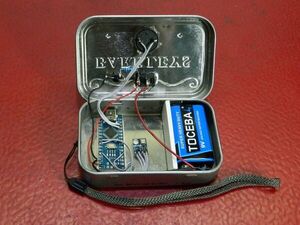
How to Make a Simplest Variometer for Paragliding
"Variometer is instrument that indicates the changes in the altitude variations. A variometer – also known as a rate of climb and descent indicator (RCDI), or vertical speed indicator (VSI), is one of the basic flight instruments. For human, flying is not natural and we don’t have a dedicated sense to 3D motion. Once the visual landmark to the ground is lost, it’s very difficult to figure out if we climb or sink. Within the scope of a variometer for paragliding, the absolute altitude is not that interesting, this is the altitude variation that matters. This particular example is a variometer that indicates these changes through an audible signal, which in this case is an advantage, because all the senses are free to perform safe flight." [...]
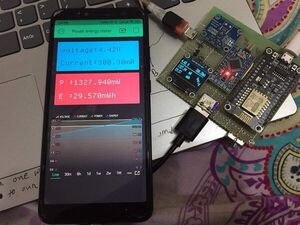
IOT based Power and Energy meter
"This is a IOT based Power and Energy Meter with Blynk iot platform. Story In this project I'll show you how to make a IOT based power and energy meter which can measure current, power, energy consumption using INA219 current sensor and shows it on OLED display and to blynk app through internet. In blynk app you can see the graphically representation of your voltage, current, power and energy data. How to make it? To make this project you will need some component Arduino Pro mini ESP12E Nodemcu INA219 current sensor 0.96" i2c OLED Veroboard 450mah lipo (capacity is optional) with charging circuit. " [...]
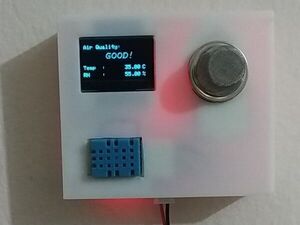
Air Quality Monitor
"DIY Arduino Air Quality monitor which can measure surrounding Air Quality also shows temperature and humidity in your room. Many times we feel very weak while waking up from the bed even after getting a good sleep at night. This sometimes happens because of the poor air quality in the closed room at night. This is a low cost Air Quality Monitor which can monitor the air quality of a room using MQ135 air quality sensor. It also measure the room temperature and humidity using DHT11 and shows the data on a OLED display. It is a fun little project and very helpful too." [...]
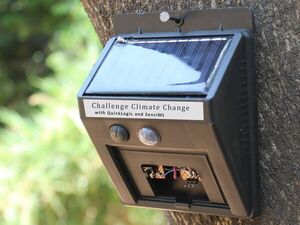
Forest Guardian
"A low-power solar-run device that detects illegal logging of wood at the edge using acoustic data. Story Nearly 19 million acres of forests are destroyed annually, equal to 27 football pitches a minute. Forests serve as homes for thousands of animals, and for many people, they’re a source of food, water, clothing, medicine, and shelter. The so-called lungs of the Earth also mitigate climate change by acting as a carbon sink. As cities expand with the rise of natural calamities like forest fires at an alarming rate the need to conserve the forest ecosystem is a vital step in our fight against climate change. Forest fires need no introduction." [...]

PovGlobe
"This project consists of a 3d printed persistence of vision (POV) globe which is able to render arbitrary spherical images from appliations, written in c++ or python. " [...]

LED Whack-A-Mole V2
"Imagine you are sitting at your workbench, satisfied, playing a game you made yourself. That's what this project shows you how to do. I was looking for things to make with an arduino, and I stumbled across this project by author courtlandjensen. I followed the steps listed in the article, and made an LED whack-a-mole game. However, the code required that the joystick be pressed all the way to one of the sides, and that wasn't suitable for me. So I edited the code, did the math, and made it so that you have to be in the top/bottom/left/right 3/8ths of the full motion path to trigger a location." [...]
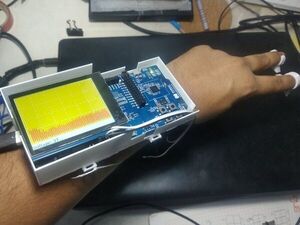
nRF5340 Oscilloscope Band
"Measure and Analyse Voltages on the Go with nRF5340 Almost all Hobbyist and Makers dream about owning a Oscilloscope but due to huge prices we could not afford it. So why not make your own? I have created a Hand Held Oscilloscope which can be used as a wearable to measure voltages with probes attached to your fingers. " [...]
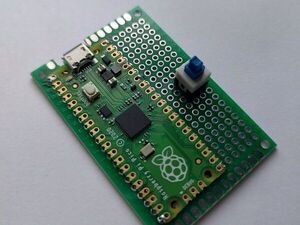
Hardware Boot Select Switch Using Pico
"Pre-choose the OS to boot, even before turning on the computer by toggling a switch. Now you don't have to wait to select the os. Wandering Hackaday.io for projects, I stumbled upon this project(click) by Stephen Holdaway. In this project, he solved a frustrating task faced by every dual boot user, which is sitting and waiting to choose os (Windows) from the GRUB menu any time when we want to switch to windows. He was able to add a hardware switch to determine the OS to boot each time the computer is turned on. He achieved this by configuring STM32 Microcontroller as a USB mass-storage device." [...]
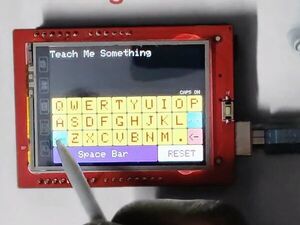
Laptop Keyboard Typing model TFT LCD Project
"Created Keyboard layout in TFT LCD Shield & also you can use as typewriter Overview In this tutorial, you will learn how to use and set up 2.4″ Touch LCD Shield for Arduino. First, you’ll see some general information about this shield. And after learning how to set the shield up, you’ll see 3 practical projects. What You Will Learn: View text, writing and arbitrary geometric shapes with custom colors View high-quality BMP colored pictures create the Paint software The role of screens in electronic projects is very important. Screens can be of very simple types such as 7 Segment or character LCDs or more advanced models like OLEDs and TFT LCDs. 2.4” TFT shield is one of the most widely used graphic screens." [...]

Sign Glove
"It is a glove that can be used by those who cannot speak to communicate with others in verbal language. The Problem Many people across the world cannot speak and they often use body language and sign language to communicate with others but not everyone knows sign language so the mute cannot communicate with everyone using only sign language. The Solution This glove can be worn by people who cannot speak and it can help them to communicate by translating their gestures from sign language to verbal language and then pronouncing them with help of a mobile application. It's Working It works by recognizing the gestures made by hand with help of flex sensors placed on fingers, flex sensor varies its resistance based on how much a finger is bent and that resistance is sensed by the Arduino and based on the amount of resistance of each sensor, it prints the letter of the gesture on serial monitor. The mobile application reads the serial monitor, prints it on screen and pronounces it. " [...]

NeoPill
"A STM32 Blue Pill-based NeoPixel emulator Ever need to blink your NeoPixels but you either didn’t have enough or they’re already installed in a project you don’t have within easy reach? Enter the NeoPill, an easy to make NeoPixel emulator that taps off of your target microcontroller to graphically emulate NeoPixels on your PC. Consider it a NeoPixel to USB bridge. This project started as an investigation into STM CubeMX operation – I’d be lying if I said configuring the powerful STM32 timers were easy – and after looking at examples online, reading (and re-reading) manuals, and spending time with the debugger I got something working ok. All you need is: - A STM32 Blue Pill. - A few jumpers. - USB cable." [...]
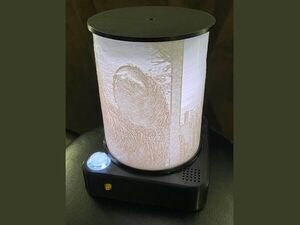
Musical Lithophane Lamp
"Create a rotating lithophane lamp that when triggered will play music and LED animations Introduction A lithophane is a translucent, etched object that once back lit will display an image. With 3d printers readily available it is easy to create a lithophane in a variety of shapes and sizes. This project was intended to create a lithophane lamp, but rather then just be static I wanted the lamp to rotate creating a 360 degree lithophane "lamp shade" allowing all sides to be visible without the viewers having to move themselves. After the initial design I decided it would be interesting to add a giant button, that when pressed would start a music and light show for everyone. The project consists of 5 major components: The cylinder lithophane The electronics to run the lamp Gears and housing so the lithophane is spinning at a slow enough rate Enclosure to hold all the components The code making everything work Lithophane The lithophane we will be generating will be 152mm tall and require a circumference of 375mm, resulting in a diameter of 119mm. This information is important to ensure the image the lithophane is created from has the right length to width size ratio." [...]
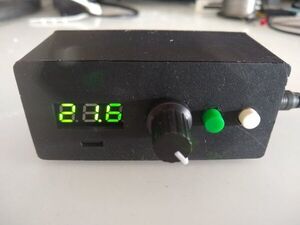
Portable Rechargeable Power Supply
"A 3V to 20V portable rechargeable power supply from off-the-shelf components. Powered by a single 18650 battery. There are a number of Portable Power Supplies that makers have built around the cheap J5019 Adjustable Step Up module. Here are just a couple of them: Portable Power Supply (18650 Battery) by alextrim Portable Variable Power Supply by lonesoulsurfer I decided to combine these two builds and design and 3D print a case for it. " [...]

The Nyctograph Machine
"A small printer for the peculiar alphabet invented to write in the dark by Lewis Carroll, author of Alice's Adventures in Wonderland. Maybe you know Alice's Adventures in Wonderland by Lewis Carroll. Or maybe do you remember at least the white rabbit in Matrix movie: that was a reference to Alice's Adventures in Wonderland. Well… it turns out that Lewis Carroll was also a mathematician and inventor. What did he invent? Nyctography, a card containing a grid of cells to guide the writing of notes in the dark, using a peculiar alphabet." [...]
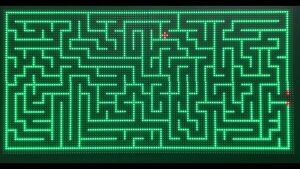
Creating and Solving Mazes on a 128 x 64 LED Panel
"Use the Arduino Due to control a large LED flat panel display. And the software to create and solve mazes on it Two years ago, I published a tutorial about building a 128 x 64 LED two color panel and controlling it with an Arduino Mega. It's here: LED Flat Panel with Arduino MEGA. The most popular software I included with it was a sketch to create and solve mazes. In this tutorial, I will upgrade the system by changing the processor to an 84 MHz Arduino Due and also provide a lot of new information about the software required to build and solve mazes! So this tutorial is divided into two parts - first a detailed discussion about how we create and solve mazes in software, and then in part II, I will discuss the construction and software to control the large LED panel using the Arduino Due." [...]
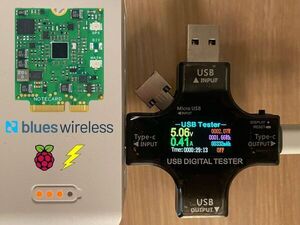
Optimizing a Raspberry Pi for Off-Grid Power Consumption
"Let's dive into how we can use a set of power-optimizing strategies on a Raspberry Pi and turn it into an off-grid IoT solution. I'm hoping a good portion of you saw the recent Explaining Computers video comparing various Raspberry Pi models and how long they last on a 12V lead acid battery versus a USB battery pack. If not, it's worth a watch! This inspired me to think more about how useful a Raspberry Pi 4 Model B could really be in a remote, battery-powered setting. I mean it's tempting, right? When developing on a single-board computer (SBC) you get access to the full Python language and all of its libraries." [...]

DIY Electromagnetic Interference Detector
"I’m currently in the process of building my own CNC router. This router will be controlled by an arduino, and will help me in future DIY projects. However, there’s been some issues with the arduino randomly freezing, and end switches (wired as NO) randomly triggering. As it mostly seemed to happen when turning on the spindle, I started looking into electromagnetic interference. The biggest problem? I don’t have a clue what generates interference, how much interference is too much, and how much is already present near every day objects." [...]
Secção Videos
Videos interessantes.
That's all Folks!



